Masterpiece Story: The Rainbow Portrait
Queen Elizabeth I is known throughout history as one of the most famous British Queens. Even without a husband, she successfully ruled England for 45...
Anna Ingram 8 July 2024
Michelangelo Buonarroti is undoubtedly one of the most acclaimed artists in history. Some of his creations, such as David or the ceiling of the Sistine Chapel, for example, are among the most iconic works in the canon of art history. However, very few people know Michelangelo as a forger of antiques.
During the Italian Renaissance, young artists used to join the bottegas, or workshops, of the most renowned artists of the time. They sought to learn the art of painting under the tutelage of a master. The change of mentality in the 15th century resulted in the expansion of scientific knowledge, the development of humanism, and the revaluation of classical antiquity. The art world was no stranger to these changes and that is how young artists learned through observation, imitation of models, and nature. It is in this context that the young Michelangelo took his first steps in the world of art.
In 1488, at the age of 13, Michelangelo entered the workshop of the brothers Domenico and Davide Ghirlandaio. This type of apprenticeship did not take long to influence the young Michelangelo. His biographers, Vasari and Condivi, relate that during his time in the Ghirlandaio brothers’ workshop, Michelangelo used to copy the drawings of the old masters. He made replicas so similar that it was impossible to distinguish them from the original, especially when he dyed or aged the paper with smoke and other techniques. In this way, Michelangelo could keep the originals, replacing them with one of his copies.
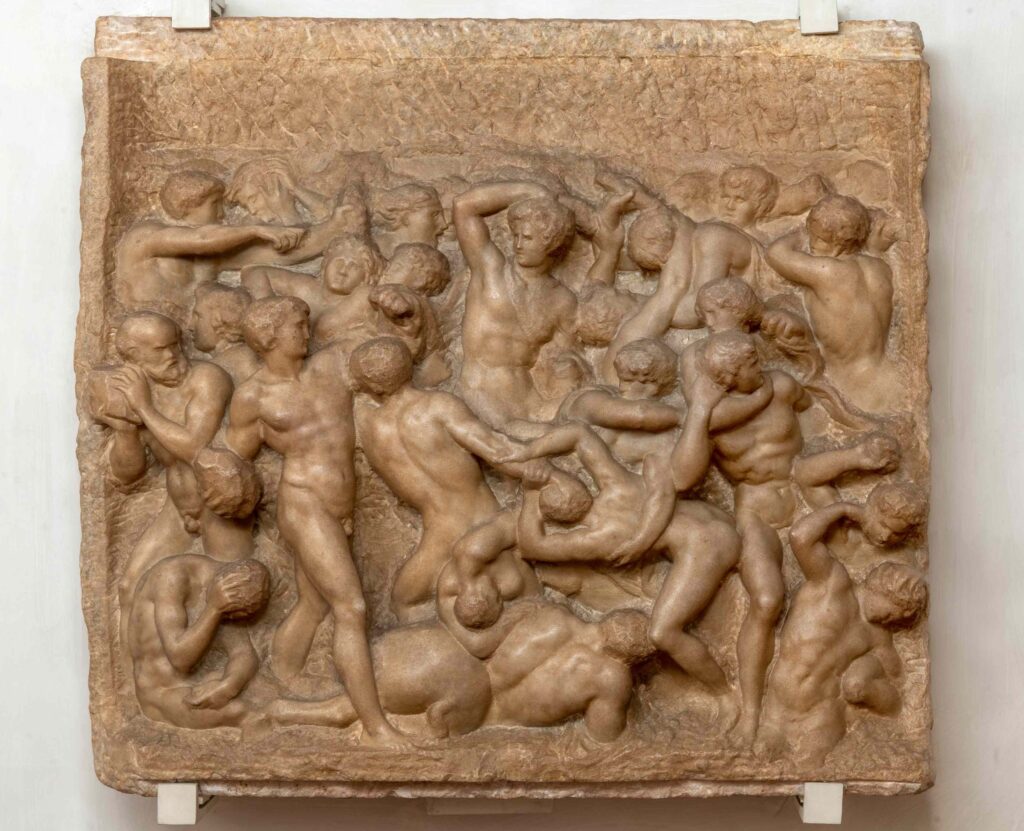
Michelangelo, Battle of the Centaurs, 1492, Casa Buonarroti, Florence, Italy.
Another aspect that may have influenced Michelangelo as a forger of antiques was the training he received in the garden of San Marco. After only one year in Ghirlandaio’s workshop, Michelangelo discovered his passion for sculpture. That is why he decided to enter the sculpture school run by Bertoldo di Giovanni. Lorenzo de Medici, known as the Magnifico, who would later become Michelangelo’s first great patron, created this school to be the first Academy of Art in Europe. There Michelangelo had the opportunity to study the ancient sculptures that Lorenzo collected, as well as imitate them. The result was one of his earliest works: The Battle of the Centaurs.
Working for another Medici, Lorenzo de Pierfrancesco, Lorenzo the Magnificent’s cousin, Michelangelo sculpted a very beautiful sleeping cupid (now lost). Such was its beauty that Lorenzo himself advised him to age it and sell it in Rome, passing it off as an antique. To achieve this antique effect, Michelangelo buried the sculpture in a vineyard and then gave it to a merchant, Baldassarre del Milanese, who sold it in Rome. He in turn sold the sculpture to Cardinal Raffaele Riario, who owned one of the greatest antique collections of the time. However, the cardinal eventually discovered the trick and demanded the return of the money paid for the sculpture. Nevertheless, he could not help but be impressed by the talent of the young Michelangelo, whom he did not hesitate to call to Rome.
Under the protection of Cardinal Riario, Michelangelo made a single sculpture, Bacchus. However, the cardinal rejected it and the sculpture ended up in the antiquities garden of Jacopo Galli. Analyzing the sculpture, it seems conceived as a false antique, not only to pass as an antique but to leave the viewer uncertain whether it is an antique or not. This observation makes sense if we think about its original location: Riario’s collection was a mix of authentic antiquities and imitations.
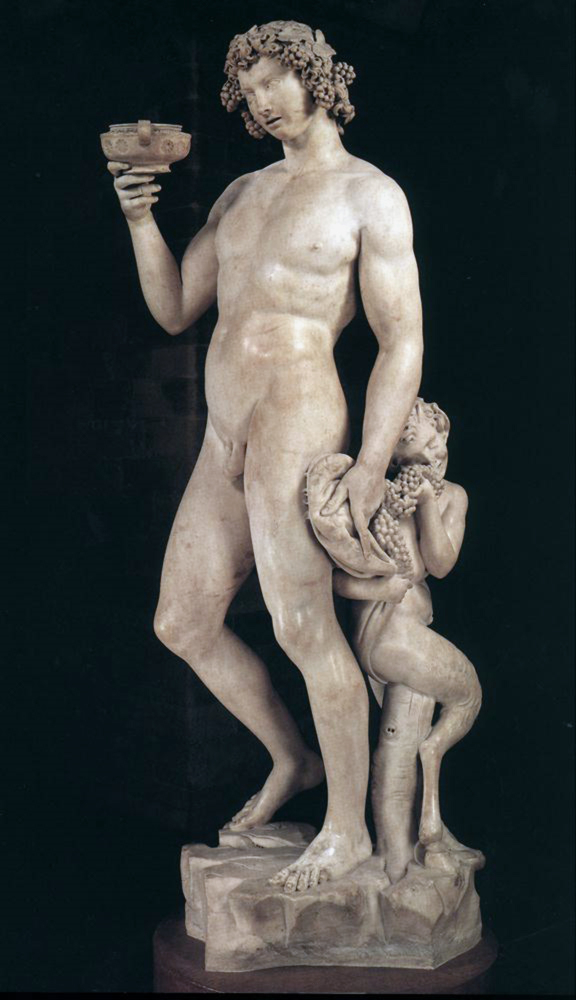
Michelangelo, Bacchus, 1497, Museo nazionale del Bargello, Florence, Italy.
When the work passed into the Galli collection, it became part of an antique context, so Michelangelo had to adapt it to its new context. To do so, the artist most probably mutilated the right arm—very few antiquities survived with all their limbs intact. This is how Maarten van Heemskerck drew it in 1530 during his stay in Rome. In this drawing, it appears without the arm that holds the goblet.
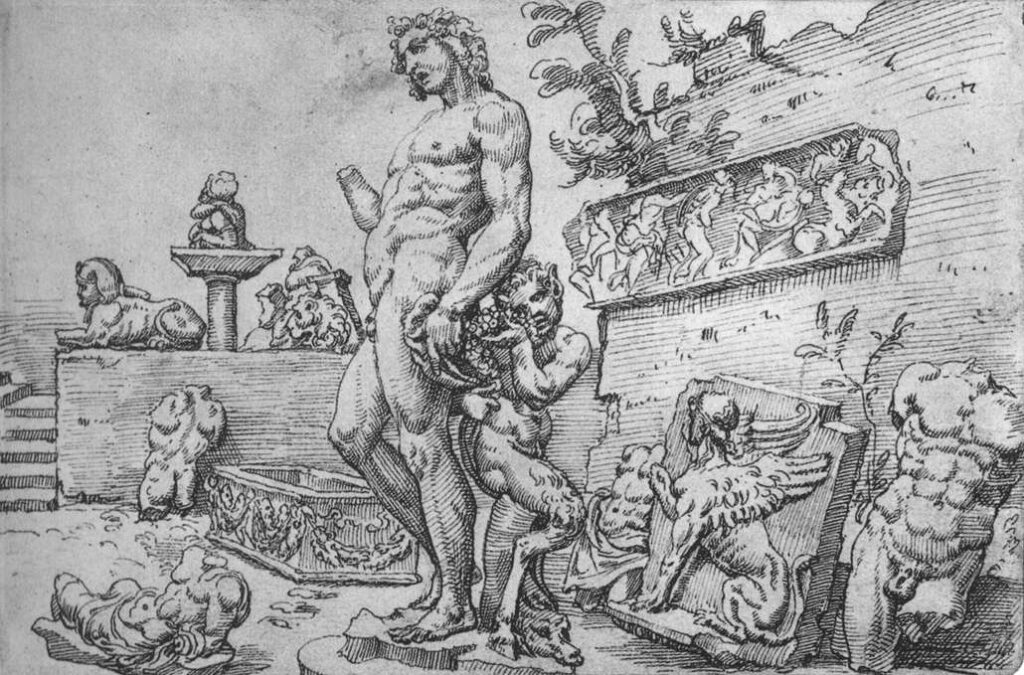
Maarten van Heemskerck, Garden of the casa Galli, between 1532 and 1535, Gemäldgalerie, Berlin, Germany.
That Michelangelo used the technique of mutilating the sculpture to age it is known from the detailed description of the work by Condivi, who describes it with an arm. From 1550 onwards, the work never appears broken again, although it is not known who restored it and when. Michelangelo managed to have his sculpture considered an antique for almost half a century. Aldrovandi himself included it in his catalogue of antique sculptures in Roman collections. In 1538 Francesco de Hollanda guessed that the classical appearance was contemporary. He immediately related it to Michelangelo as an attempt to deceive the Romans and the Pope himself with his antique style.
Michelangelo, with these works, acquired the reputation he needed to win his first major contract for a sculpture. This ended up being his first masterpiece, the Pietà. From that moment on, the commissions did not stop and he left behind his title of “imitator of antiques” to develop his characteristic and recognizable style.
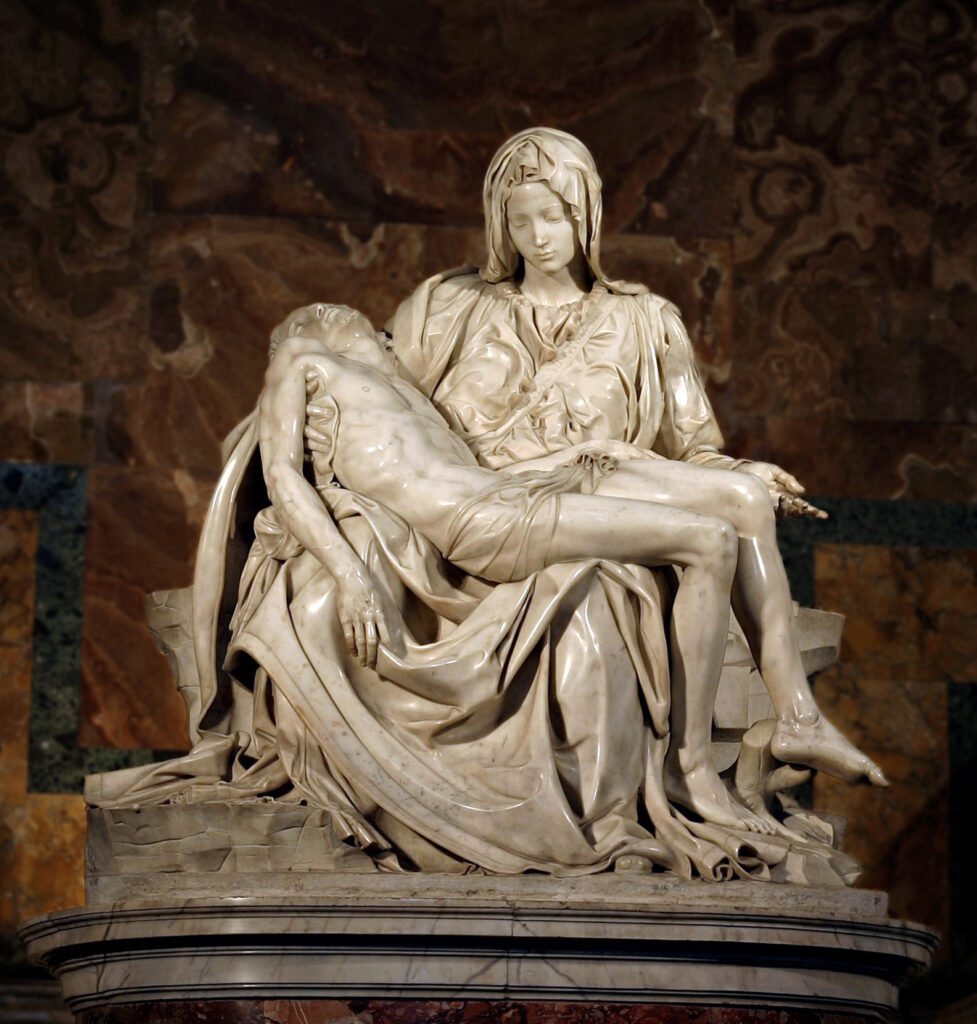
Michelangelo, Madonna della Pietà (Our Lady of Piety), 1498–1499, Saint Peter’s Basilica, Vatican City, Vatican.
However, what if he made some other sculptures during this time and they have not been linked to him yet? Contemporary researchers hypothesize about Michelangelo’s possible authorship of one of the most famous sculptures in the history of art, the Laocoön.
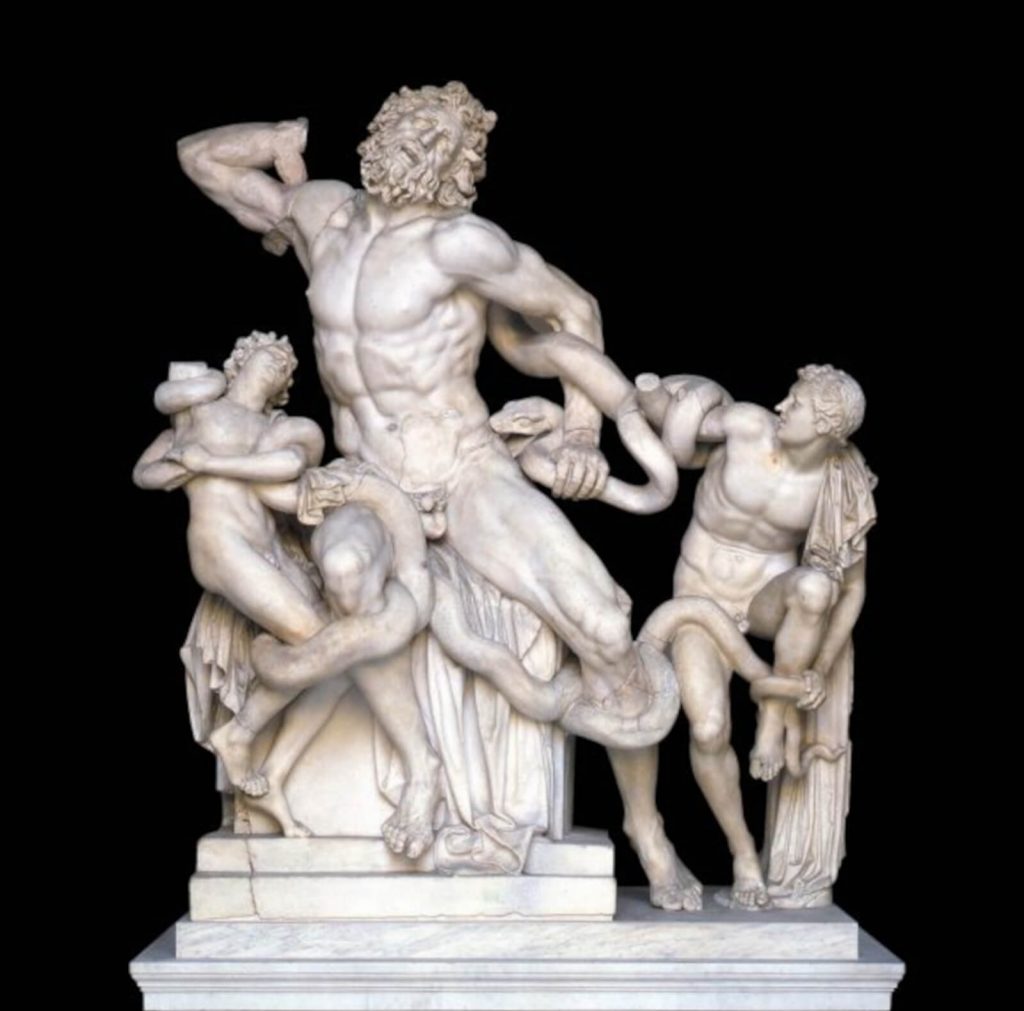
Athanodoros, Polydoros, and Agesander of Rhodes, Laocoön and his sons, copy after an Hellenistic, Pio-Clementine Museum, Rome, Italy.
David García López: Vida de Miguel Ángel Buonarroti. Ediciones Akal, 2007
Giorgio Vasari: Las vidas: de los más excelentes arquitectos, pintores y escultor es italianos desde Cimabue a nuestros tiempos. Catedra, 2011
Leonard Barkan: Unearthing the past: archaeology and aesthetics in the making of Renaissance culture. Yale University Press, 2001, p. 201-206
Lynn Catterson: “Michelangelo’s Laocoön?”, in Artibus et Historiae, Vol. 26, No. 52 (2005), p. 29-56
DailyArt Magazine needs your support. Every contribution, however big or small, is very valuable for our future. Thanks to it, we will be able to sustain and grow the Magazine. Thank you for your help!